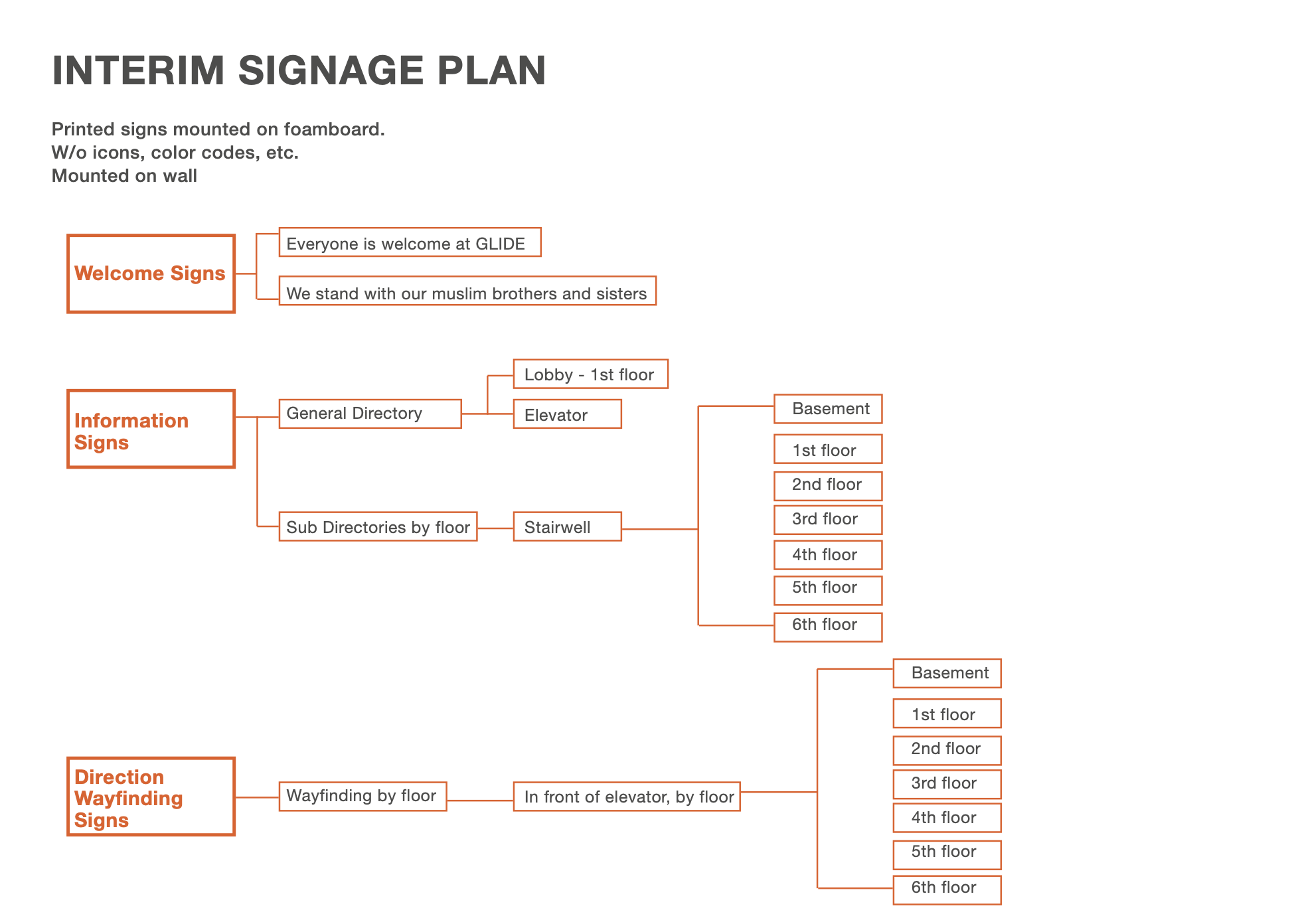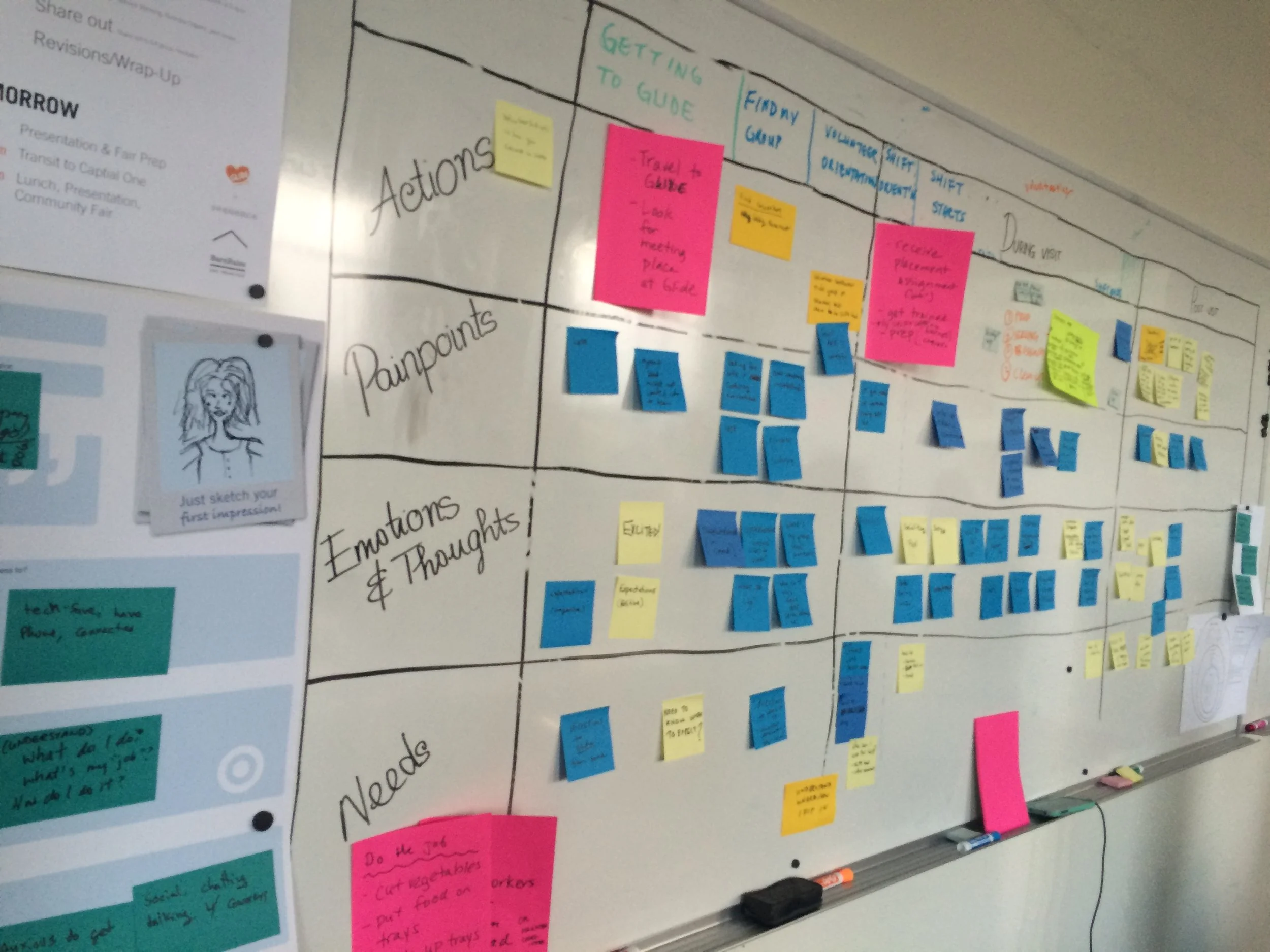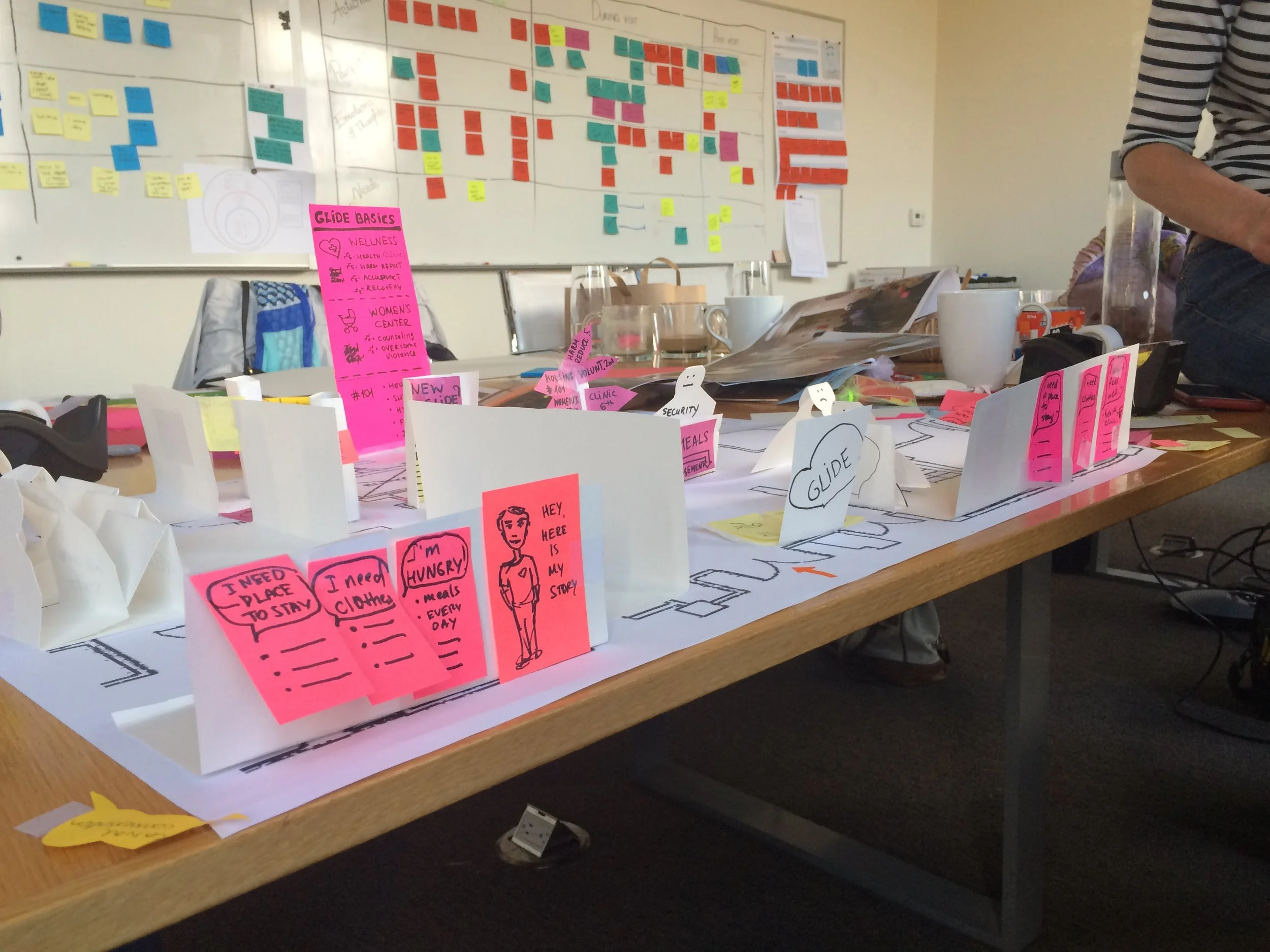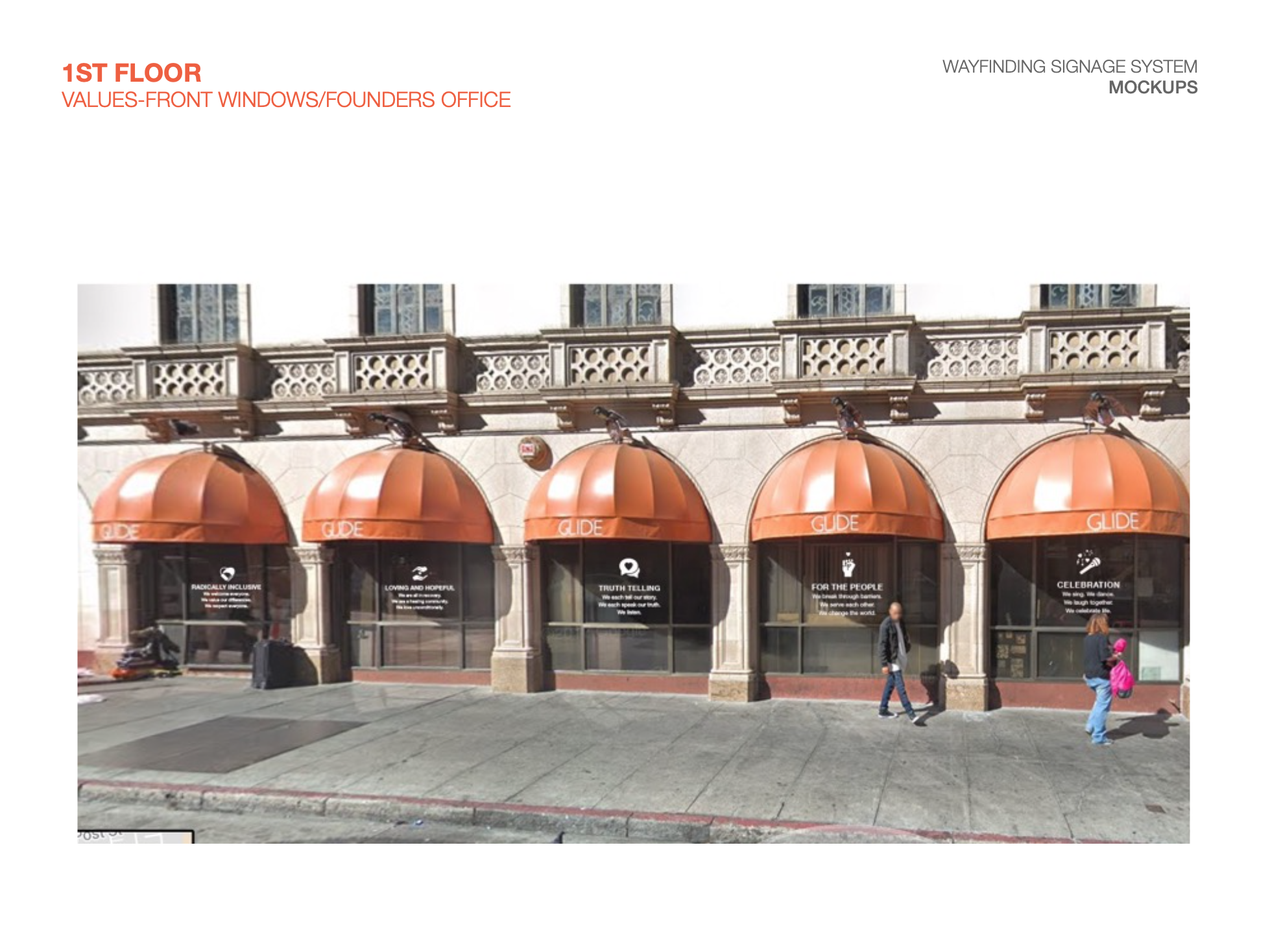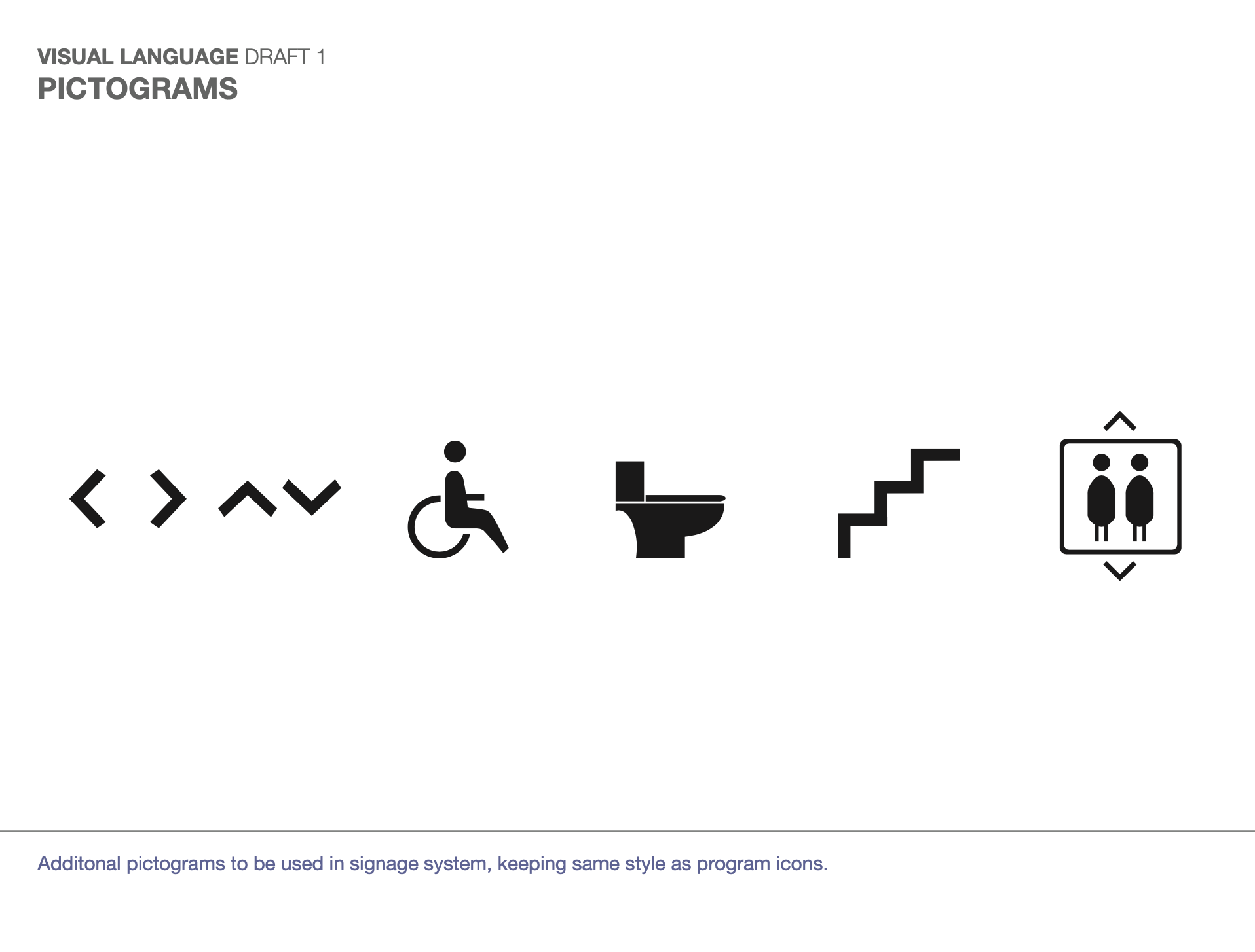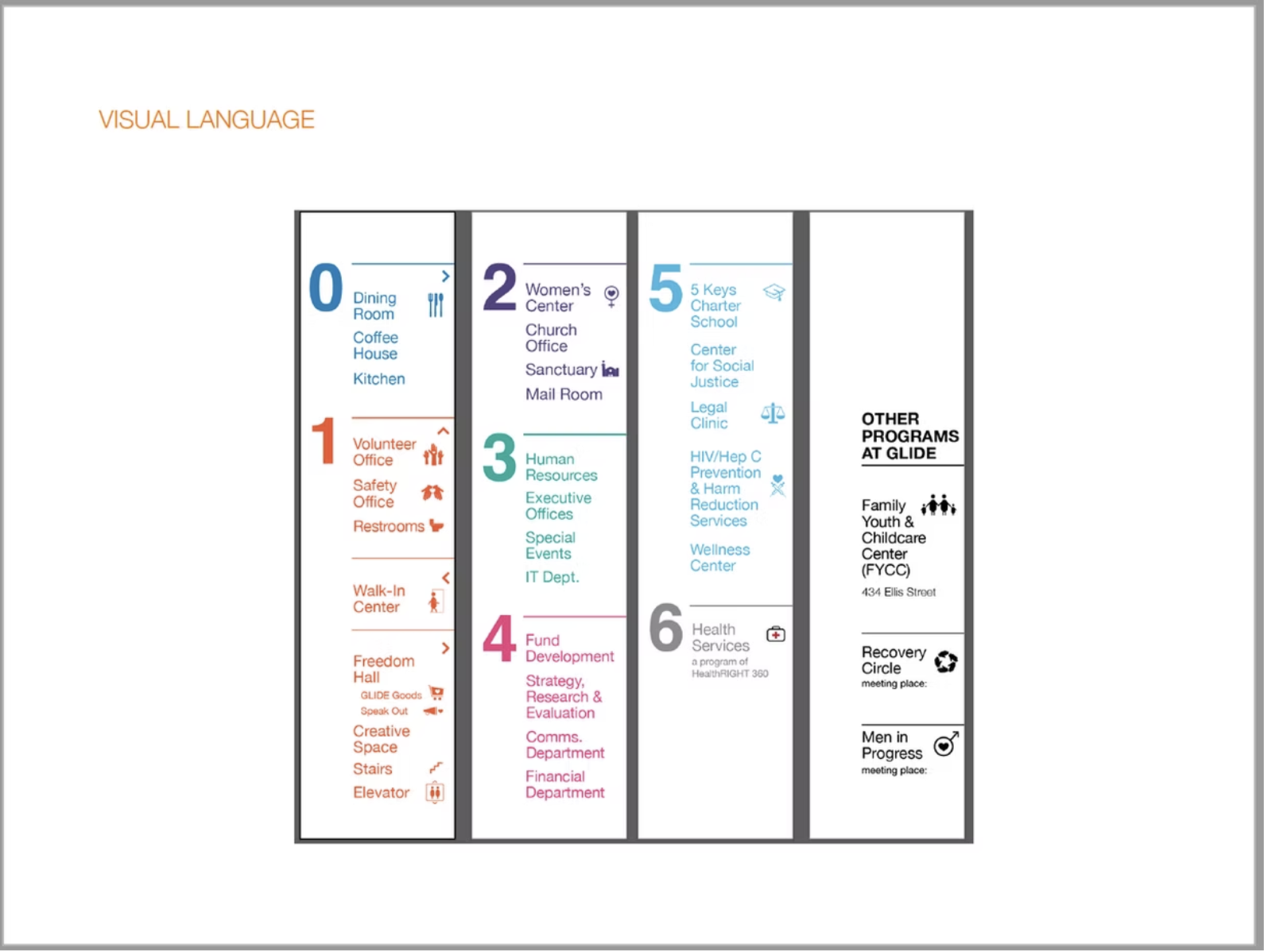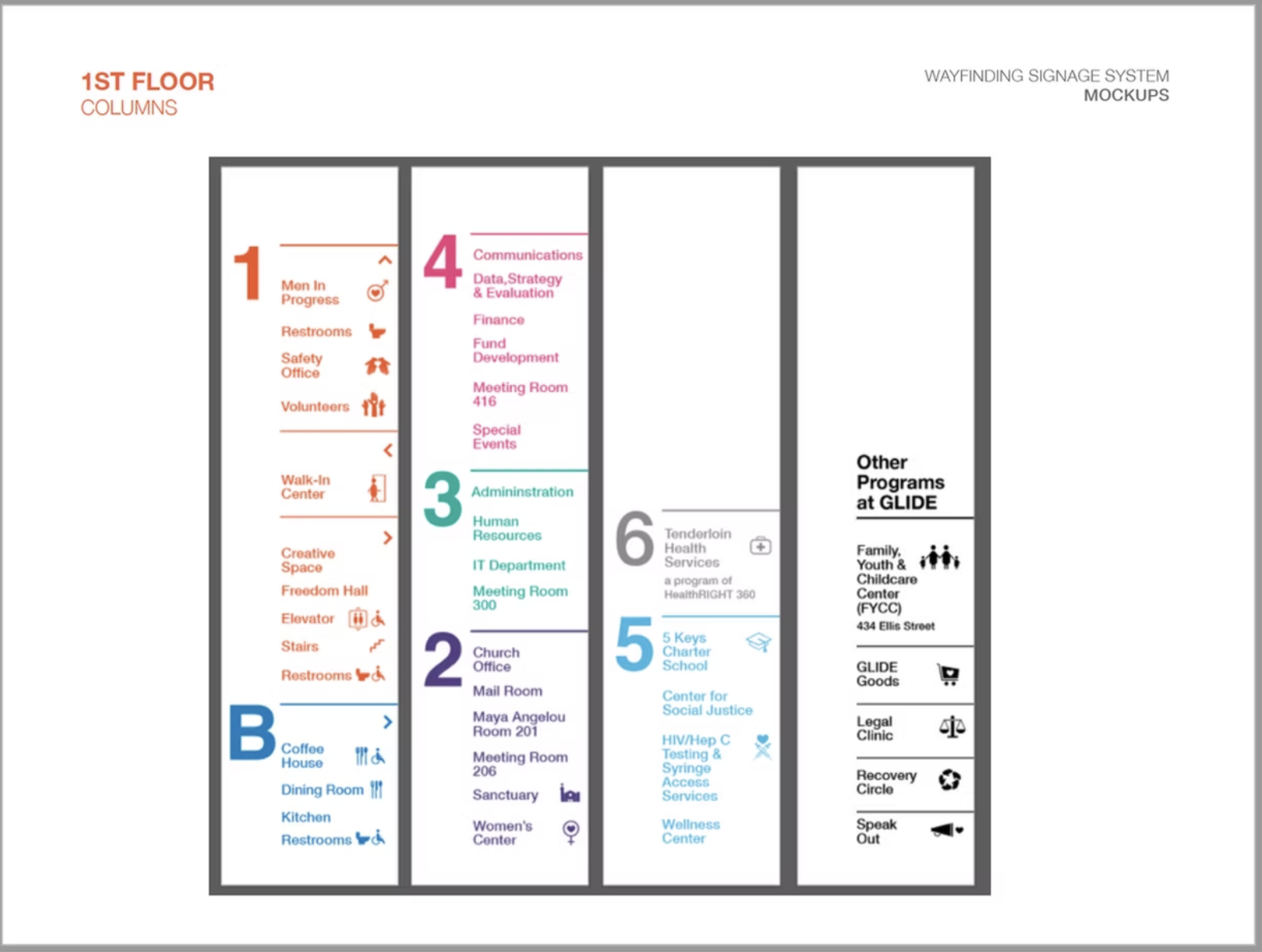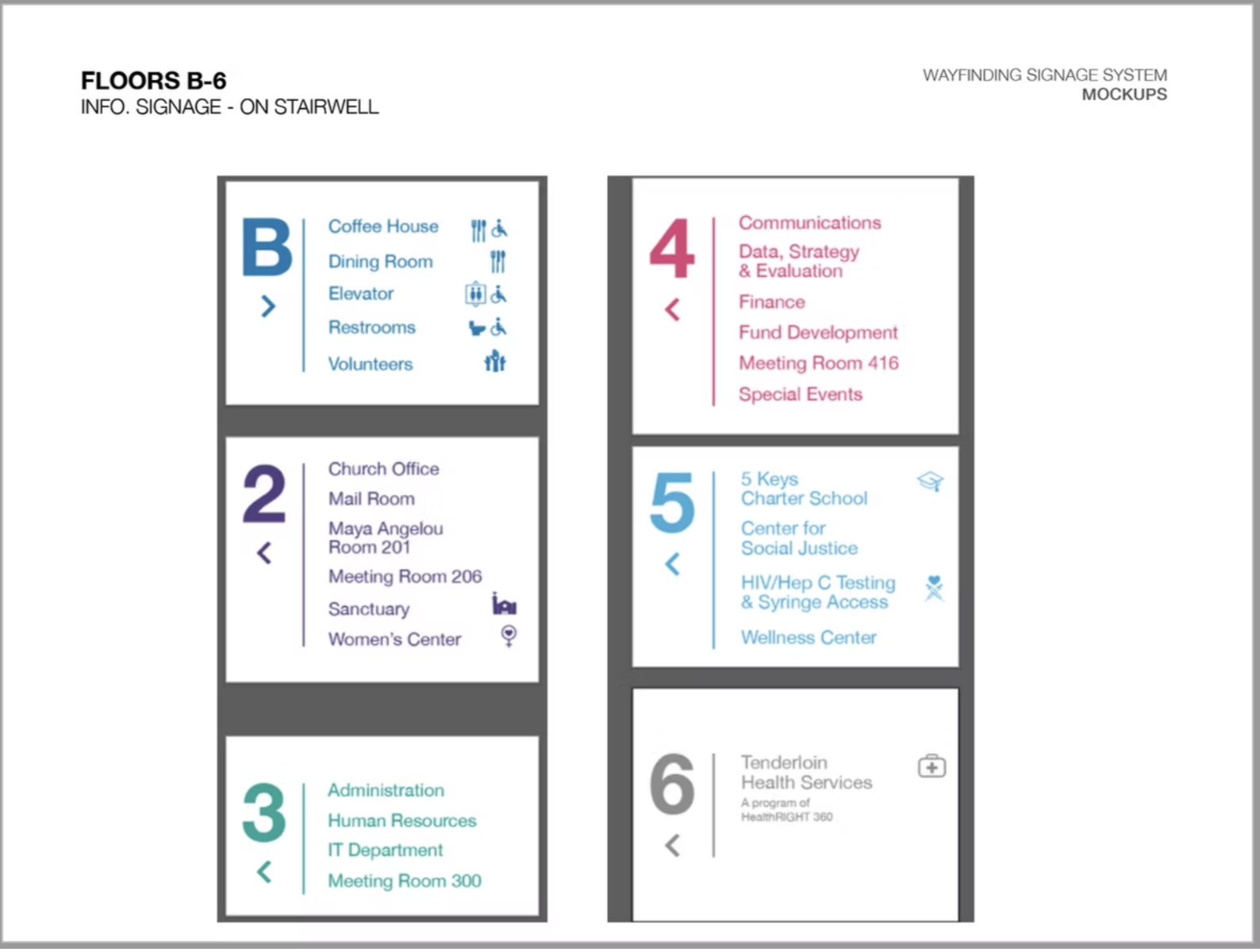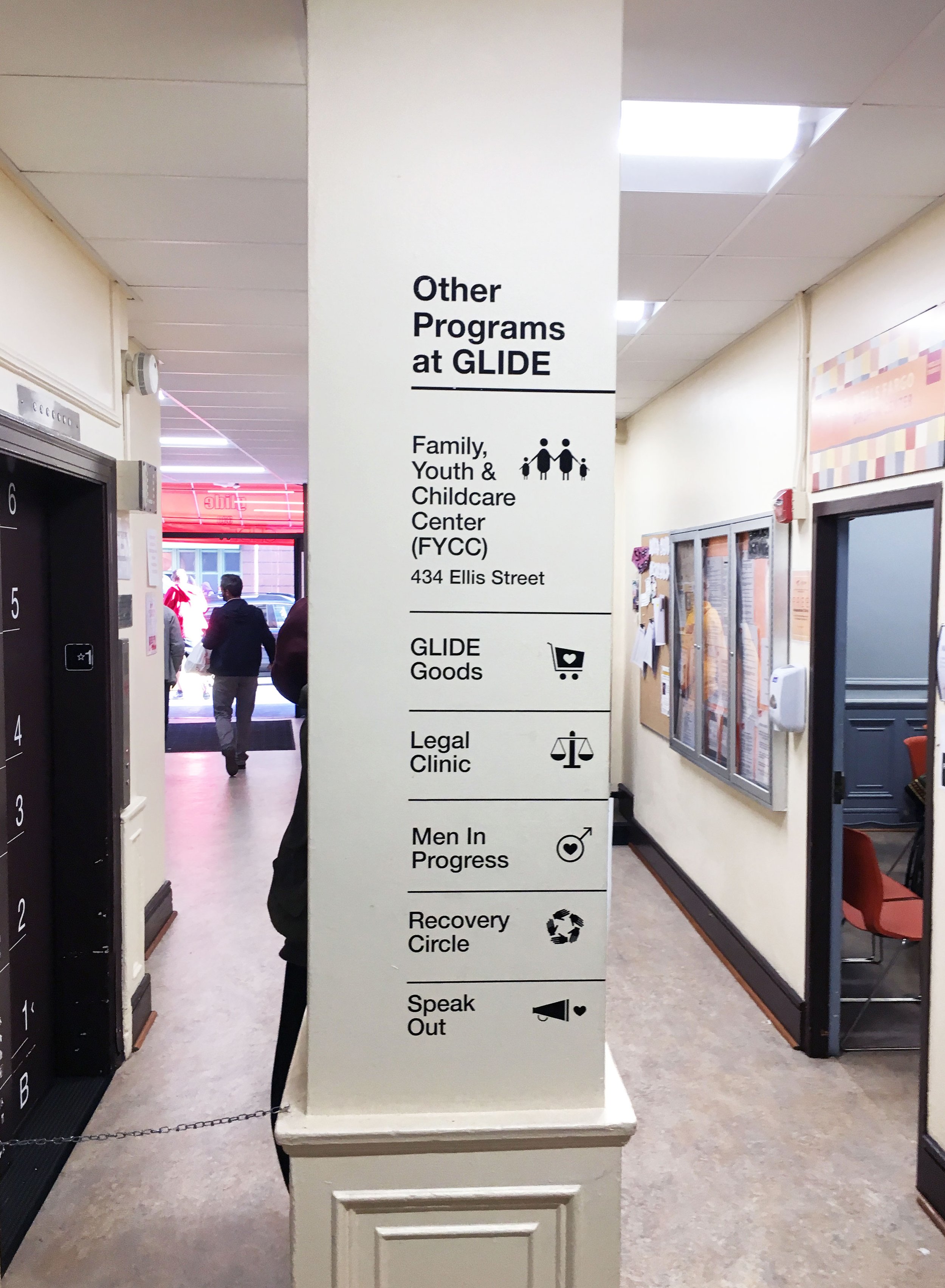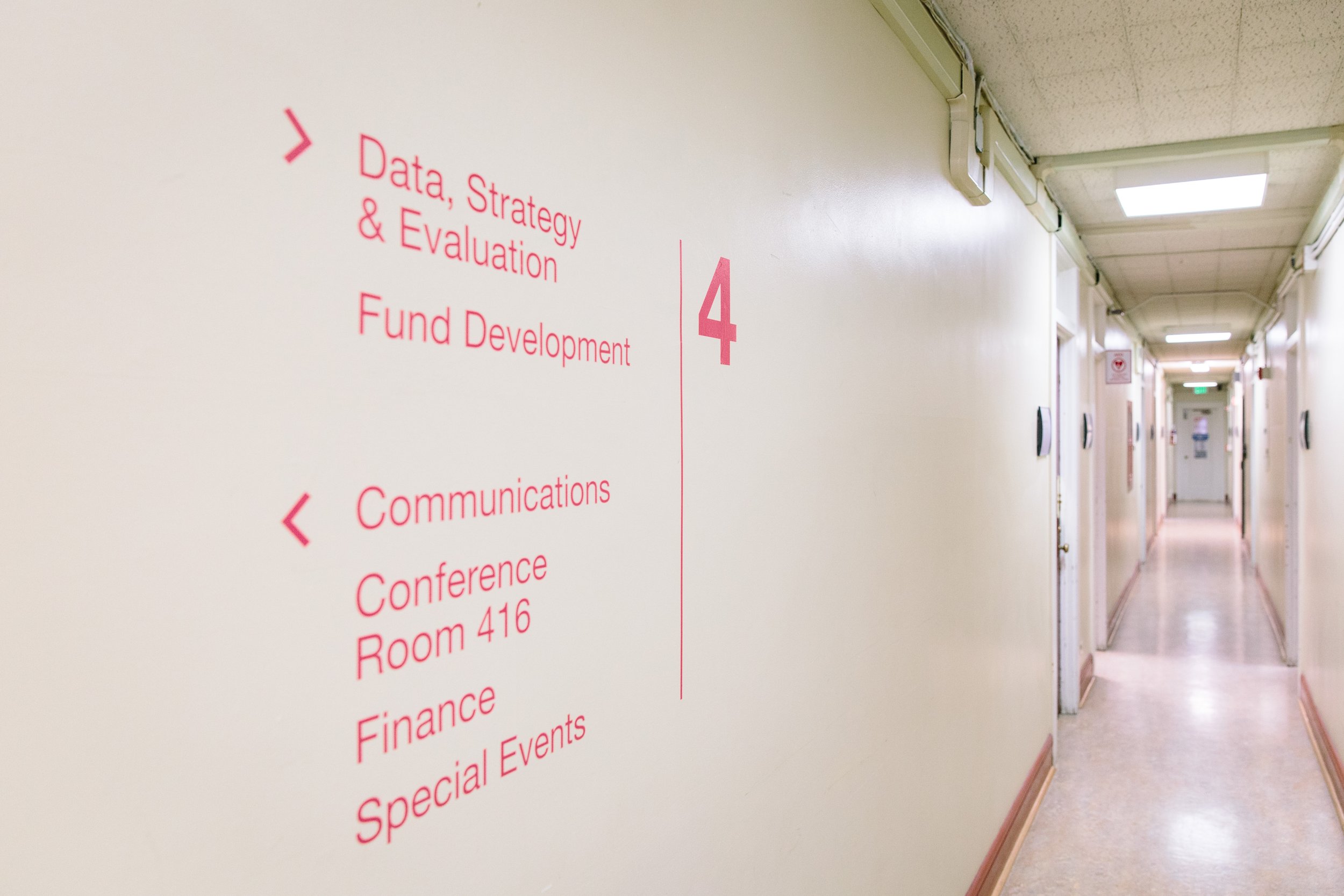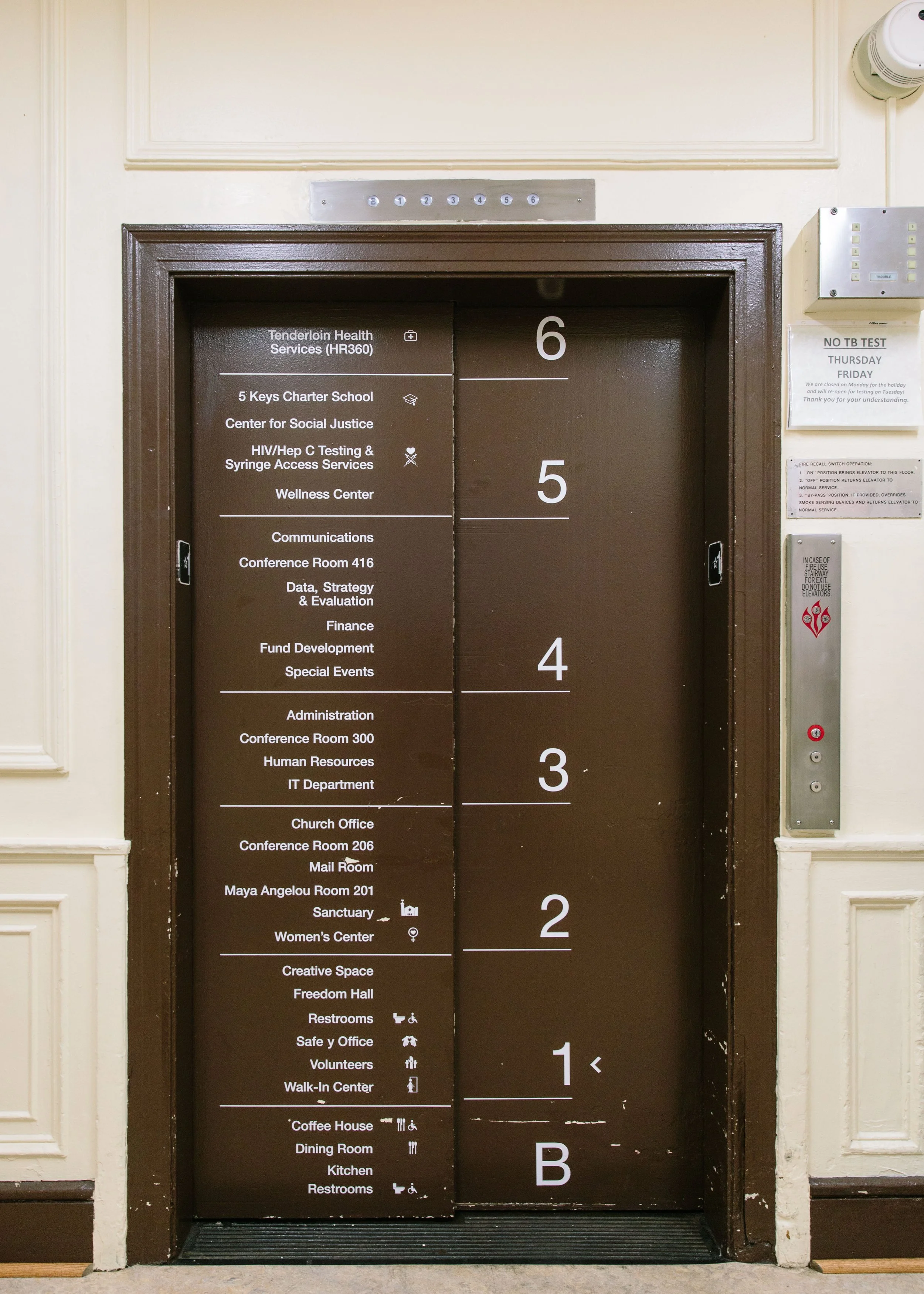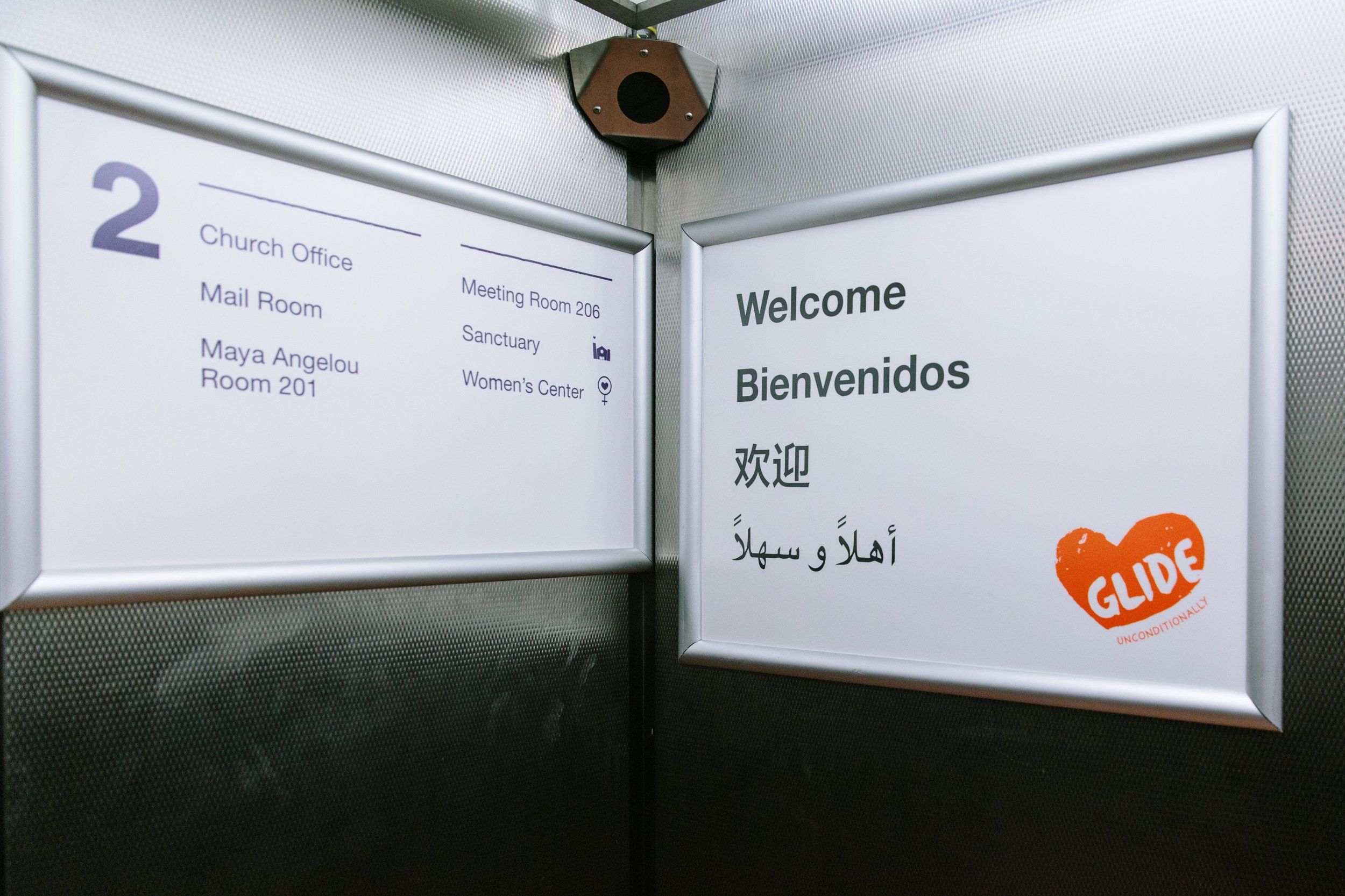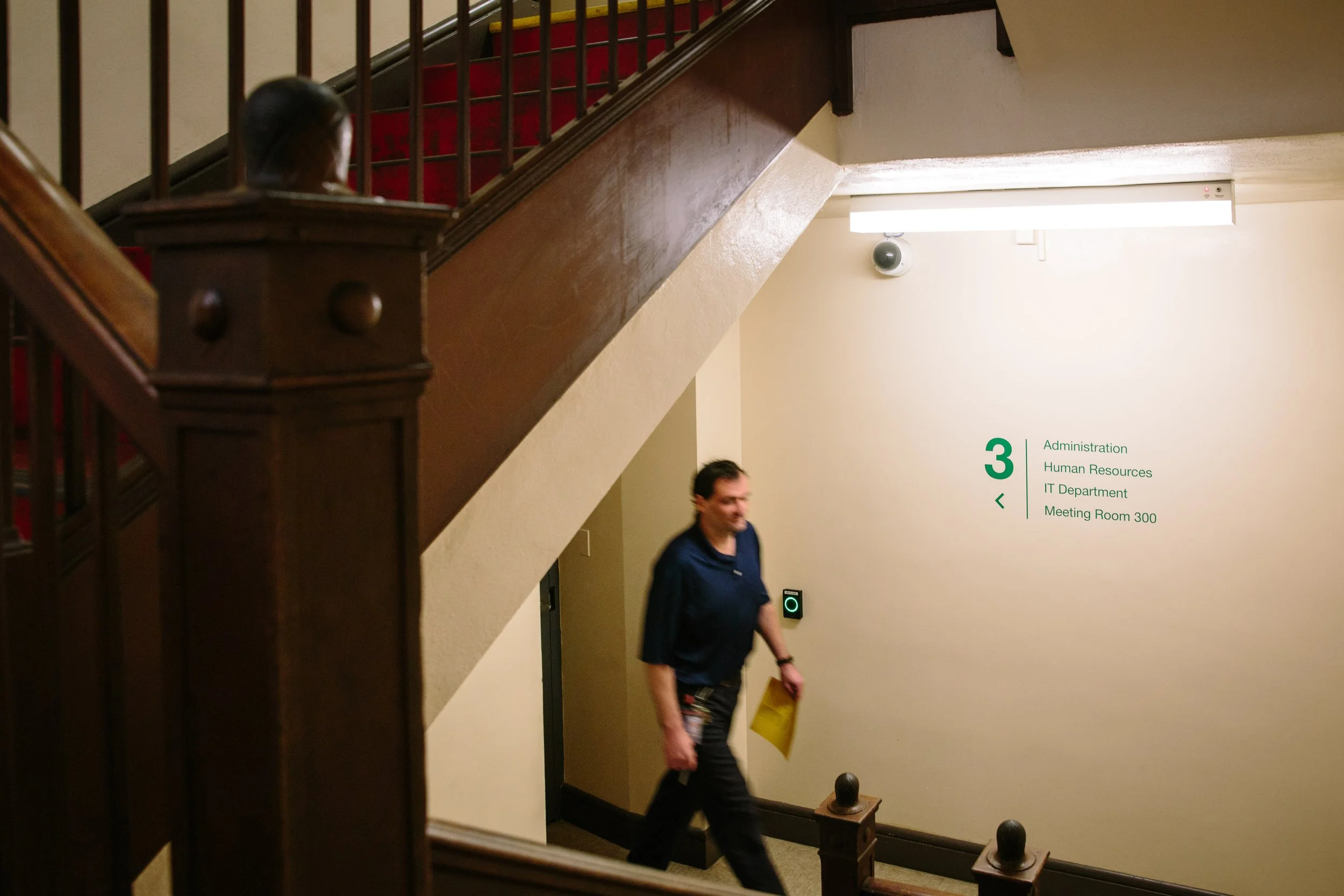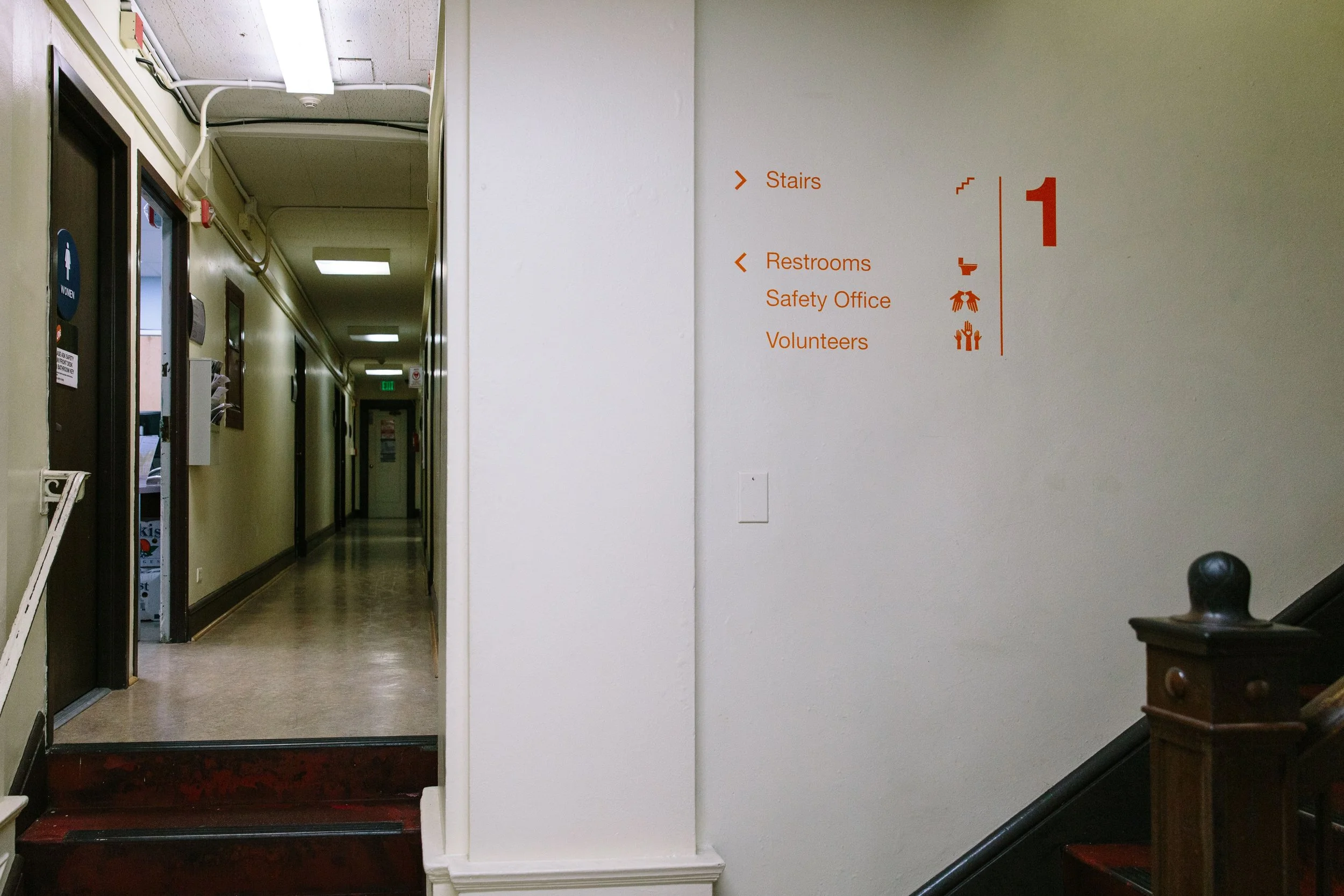GLIDE's Navigation System
A wayfinding project that helped shape how the organization saw itself, leading to a clearer structure, cohesive identity, and aligned language that ultimately informed the organization’s website and communications.
Partner: GLIDE Foundation
Year: 2018
Team: Susana Eslava
Background
GLIDE is a pioneering human services and social justice nonprofit based in San Francisco, CA, dedicated to supporting the city’s most vulnerable and marginalized individuals and families.
Over the years, GLIDE’s programs and services have continuously evolved in response to shifting community needs. As a result, the organization—operating out of a building originally designed for residential use—undergoes constant operational and physical changes. Departments and programs have been relocated repeatedly, often based solely on available space, leading to a fragmented layout.
This dynamic environment, coupled with the absence of clear signage, created confusion among staff, clients, and visitors, many of whom found it difficult to navigate the building or fully understand the organization’s scope.
We sought to address these challenges by improving internal navigation through the development and installation of a cohesive signage system.
How can we provide all of GLIDE’s constituents with the information they require to successfully navigate the organization in a way that is accessible to all, and that is also easy for the organization to maintain?
Tools & Methods
-

Deep Research
The research phase involved an organizational audit, stakeholder and journey mapping, and system mapping. These methods revealed key challenges and helped identify distinct user types within the organization.
-
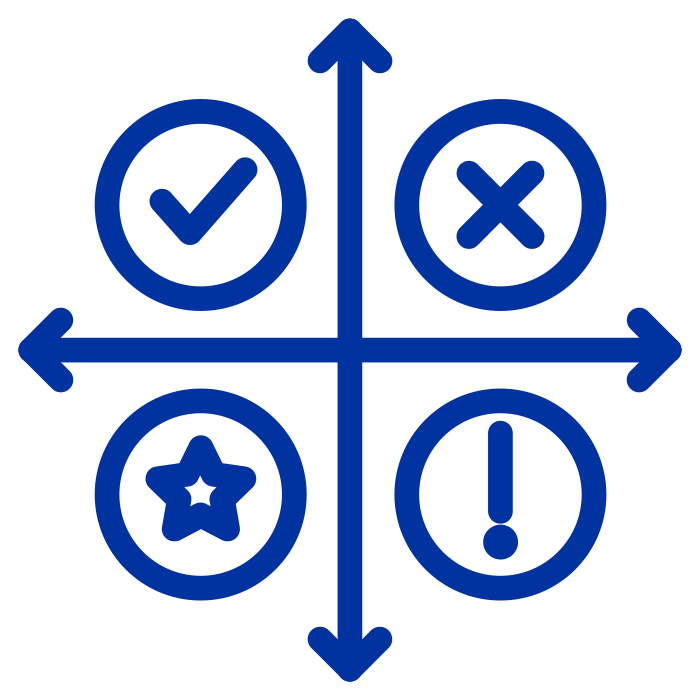
Analysis, Synthesis & Insights
Given the diversity of user groups and the complexity of their individual needs, I developed an evaluation matrix to assess and prioritize user segments and design interventions accordingly.
-

Prototyping & Testing
A range of low- and high-fidelity prototypes—including sketches, mockups, paper prototypes, interactive drafts, and digital models—were created to explore, test, and refine concepts throughout the project.
-

System Design
The scope of the project expanded beyond signage to include broader system-level interventions. Multiple solutions were designed, implemented, and integrated to address both spatial navigation and organizational coherence.
Process
Having previously served as a staff member at GLIDE, I brought valuable insider knowledge to the project. During my years in the Communications department, I worked closely with all of GLIDE’s stakeholder groups. However, like many who become deeply embedded in an organization, I had grown accustomed to navigating the space and its systems by muscle memory—losing sight of how it felt to new or less frequent users.
To reset my perspective, I began the project by intentionally “re-seeing” the organization. I conducted a fresh assessment to define the project’s scope and identify critical needs from a broader stakeholder perspective. This involved stepping outside my former staff role to map the organization as a whole and consider the diverse experiences of those interacting with it.
Through this process, I discovered that while the organization had appropriate regulatory and safety signage in place, it lacked essential identification, informational, and wayfinding signage. More broadly, there was a critical need for a cohesive visual language and communication system to support navigation and clarity throughout the space.
Insights & Challenges
Constant Spatial and Organizational Change: The building’s use and layout continually shift to accommodate emerging needs, making static wayfinding especially difficult.
Diverse User Groups: Stakeholders include staff, volunteers, donors, congregants, service providers, and clients—all with distinct needs and expectations.
Accessibility Needs: Many users live with temporary or permanent disabilities, speak languages other than English, or may have limited literacy. Some also access services while in altered states of consciousness.
Internal vs. External Language: A gap existed between the organization's internal terminology and the ways external stakeholders interpreted and navigated available services.
Proposed Interventions
To choose program participants as the main users of the system and center their navigation (spacial and other) needs.
To make the information architecture and use of language align and come as close as possible to what program participants and volunteers use.
To go through the signage process in phases, first information signage (low-hanging fruit) and then wayfinding
To develop icons for all the programs and departments that provide direct services.
To color-code the wayfinding system and rank the information by floor first and then alphabetically.
To produce the wayfinding system using adhesive vinyl, which is easy to install, easy to update, hard to tamper with, and safe(r) in case of an emergency like a fire or earthquake.
Outputs & Outcomes
In addition to addressing the navigation challenges, this project enabled GLIDE to more effectively communicate the full scope of its services—many stakeholders had previously been aware of only a limited portion. The program icons developed as part of the system have since been incorporated into print materials and staff uniforms, among other applications. Clarifying the organization’s nomenclature and hierarchy also supported the structural redesign of GLIDE’s website. Ultimately, the signage system reinforced GLIDE’s core values and helped strengthen its brand identity.


